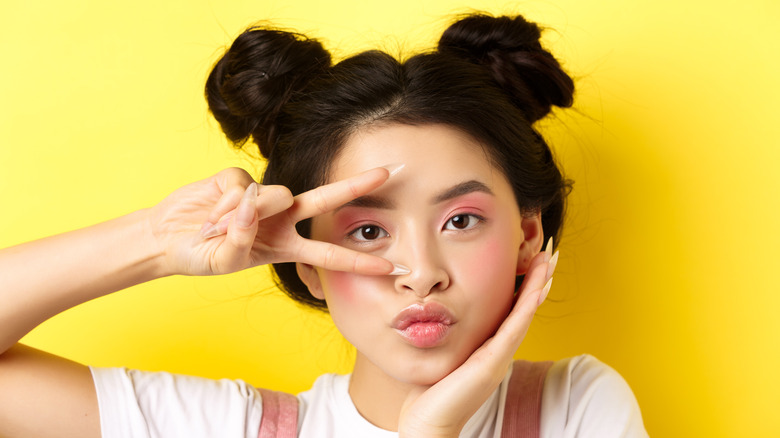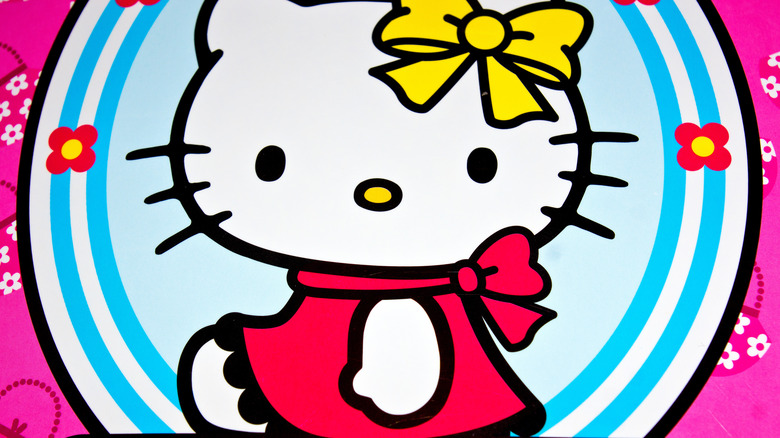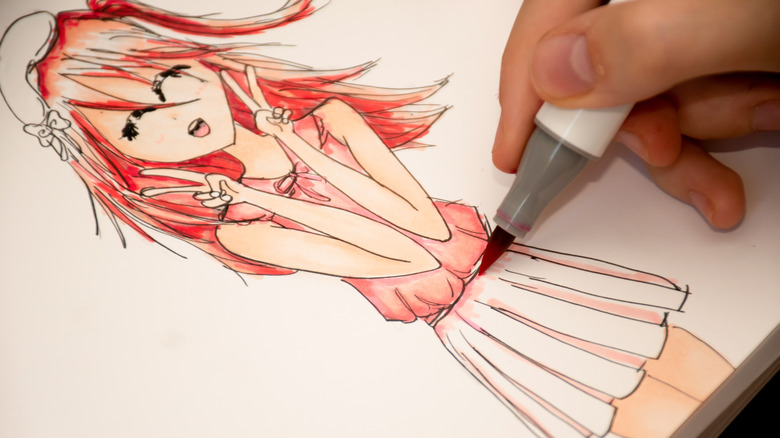Kawaii: Japan's Culture Of Cuteness Explained
According to Merriam Webster's dictionary, kawaii simply means cute, tiny, or lovable. But the term also encompasses a whole lot more in its country of origin. In Japan, kawaii is an entire culture dedicated to the concept of being cute — and cuteness overall. The word has a very specific origin. Per Japan Powered, the term actually has a more wide-ranging definition and comes from the early 19th-century word kawayushi, which is defined as meaning shy, pathetic, vulnerable, embarrassed, loveable, and small. The use of the word kawaii is often used to describe the need to offer love and care, and is always used to express positivity.
The idea of kawaii can find itself in any facet of everyday life — interpersonal actions, food, road signs, billboards, utensils, clothing, and pretty much anything, really. For instance, the popularity of Hello Kitty is an example of kawaii. The illustration of a mouthless white kitten has been a recognizable image of kawaii culture in Japan since the mid-'70s, and worldwide since the 1990s (via Western Michigan University). Its makers have slapped the imagery of Hello Kitty on virtually every possible item you can think of, and people of all ages and genders can be found sporting an item with it.
Cuteness everywhere
How did this culture come to be, you ask? The state of being cute and all things cute apparently began in Japan in the 1970s, when teenage girls there developed a particular cutesy writing style that required round lettering, per Big Think. Despite schools taking action against that form of penmanship, it managed to find its way into other parts of Japanese culture, such as illustrative mediums that later adopted the style. It ended up turning into a much bigger phenomenon that continued to spread. Japan then had a growing love for being cute, and it turned into more than just illustrations and images. The colors that one typically associated with a young girl became the norm for kawaii-centric items. These colors are usually bright or pastel.
When Hello Kitty saw its rise in the '90s, all things kawaii were nearly unstoppable in Japan. And the popular white kitten wasn't the only image for it. There were stuffed animals, comic books, and even fashion trends that were following the concept of cute. Soon it started to include hairstyles and even mannerisms, says Kawaii Babe. And yes, practicing kawaii is more than just style of dress — it comes with acting a certain way. Having big round eyes (obtainable with eye contacts), having pink and rosy cheeks (done with makeup and blush), being extremely nice and cute, and looking young and childlike are a general part of what it means to be kawaii.
How cuteness is embedded in Japan
Kawaii came to be something that Japanese people highly uphold because it stands in contrast to the day-to-day stresses of life, says this blogger. Japan's society is also big on altruism and maintaining kindness and decent manners with one another (via the University of Rhode Island). Kawaii provides a happy outlet away from those expectations and perhaps some relief to the average Japanese person.
Because cuteness tends to elicit positive reactions from people, it is no wonder why men and women and children in Japan might aspire to be adorable all the time; it brings out good behavior. The fact that various industries in Japan have also adopted this trend makes kawaii a very prominent aspect of Japan's culture. You can even say it is cuteness overload because nearly every major Japanese company has a kawaii mascot to represent their brand (via Japanese Shop).
With every turn, one can apparently find some sign of kawaii being promoted in the culture. One of Japan's biggest exports, anime, is the literal definition of kawaii (via Anime News Network). The manga drawing style of the animations originate from Japan, and one of the common features of the illustrations are the big and round eyes — a key component in what it takes to be kawaii. It's also something to do with looking innocent and cute, and bringing out the nicer and kinder behaviors in people (via Reel Rundown).
And truthfully, when you see the popular Pokémon character Pikachu, aren't you thinking, "Isn't he just cute?"


